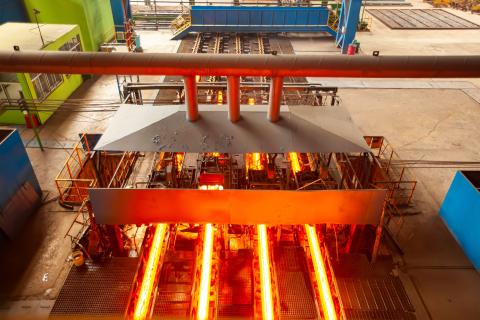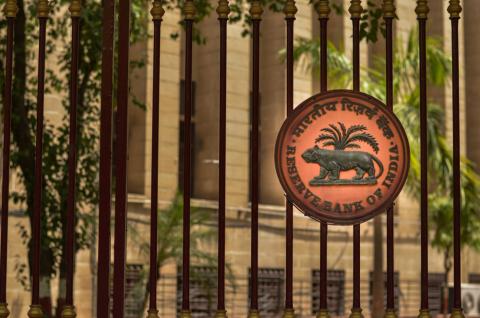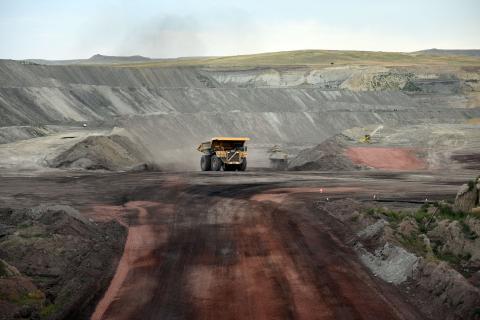Coal Industry Talking Points: Blame Somebody Else
Yancoal Australia’s recent spin on its announcement around 225 job cuts at its Hunter Valley operations in New South Wales is a searing case in point of a big pure-play coal company blaming somebody else for its troubles.
The company’s chief executive, Reinhold Schmidt, went on a rant last week in which he said that “mining is no longer the favored child” and that policymakers and regulators are picking on it as a way of “political posturing.”
The fact is, Yancoal Australia is in rickety financial condition not because of what anybody else has said or done. It’s sinking because its leadership has made too many reckless top-of-the-cycle, multibillion-dollar debt-funded acquisitions and has failed to adapt to oversupply realities in a seaborne coal market in structural decline.
Indeed, if anybody has a right to complain it’s the investors, employees and taxpayers who are at mounting risk because of Yancoal’s bad business decisions, driven by a debt-funded zeal to expand.
Recall that in 2009, the company completed the A$3.3 billion full-ownership acquisition of Felix Resources. Then, in 2011, it acquired Syntech Resources for A$202 million and Premier Coal for A$297 million. By 2013, Yancoal could see it had messed up. It sought an exemption from the 20-year set-price coal supply contract it held with Verve Energy, the Western Australian Government-owned utility, saying it couldn’t make good on the deal because of losses it was incurring at Premier.
Published reports from the time detail how Western Australian Energy Minister Mike Nahan granted the company an 18 percent coal price increase, amounting to a taxpayer subsidy of up to A$300m over the remaining 16-year life of the contract. All so Yancoal could pass on the costs of the mistakes it had made.
YANCOAL IS ON A LONG LIST OF COMPANIES THAT CAN CLAIM THE DUBIOUS DISTINCTION OF HAVING MADE ILL-INFORMED DEBT-FUNDED TAKEOVERS in recent years. These poor choices have hurt investors in particular and often motivated the companies to shamelessly seek government subsidies of one variety or another.
Other examples, just in Australia:
- Rio Tinto’s careless acquisition of Riversdale Mining for $4 billion in 2011 and then its admission in 2014 to the extent of its board and management failure in that top-of-the-cycle acquisition. Rio Tinto wrote off billions of dollars of shareholder wealth and dumped its Mozambique coal mine for US$50 million onto the Government of India’s International Coal Ventures (a year on that mine is said to still be losing US$7-10 million per month). Rio Tinto’s stock is down 48 percent over the past five years.
- Whitehaven Coal’s progression from holding net cash of over A$200 million in 2012 to net debt approaching A$1 billion now, mostly because of the leveraged development of the Maules Creek coal deposit. Whitehaven’s share price has declined by 76 percent over the past five years.
- Glencore’s 2013 acquisition of Xstrata for US$41 billion and then in the very same year its write-off of US$8.1 billion relating to goodwill impairments, plus another US$2 billion over 2013 and 2014 on other asset write-downs. Glencore’s share price is down 60 percent over the past five years.
- GVK Power & Infrastructure Ltd of India’s acquisition in 2011 through its GVK Coal Singapore P/L associate of the Alpha Coal deposit in the Galilee Basin for US$1.26 billion. GVK reports today a current liability deficit of US$885 million on the acquisition, and says it still owes Hancock Prospecting US$560 million. Meantime the project, which has put taxpayers, among others, at risk, appears to be stalled and evidently unviable.
PEABODY ENERGY OFFERS ANOTHER STARK (AND GARGANTUAN) INSTANCE OF A COAL PRODUCER GONE AWRY because its reach has so badly exceeded its grasp and because it has so poorly misjudged energy industry trends. Peabody Energy’s 2006 acquisition of Excel Coal Ltd for A$1.34 billion in 2006 shows its hubris; so does its spinoff in the U.S. of Patriot Coal Corp. in 2007—only to have the new company enter Chapter 11 in 2012 and then again in 2015, not to mention its acquisition of Macarthur Coal Ltd (in Australia) for a record A$4.9 billion in 2011.
Peabody, which is based in the U.S. reported asset impairments of US$929 million in 2012, US$528 million in 2013 and US$154 million in 2014. Despite these multi-billion dollar losses, Peabody continues to reward its leadership with shareholder-subsidized largesse. It paid its chief executive an average US$10.4 million annually over 2012-2014 before promoting him to be chairman. With Peabody’s decline, shareholders have lost almost all of their equity value as the company struggles under a US$5.5 billion debt burden and billions of dollars of unfunded rehabilitation and unfunded retired worker pension liabilities. Peabody’s stock price is down 80 percent just this year, 97 percent over the past five years.
And Yancoal’s lashing out at others is hardly unique in the coal industry—Peabody and others do it too. My colleague Tom Sanzillo wrote about that recently (“Seeing Through Peabody’s Attack-the-Messenger Strategy”), noting that the U.S. coal industry, for example, is upset because it may be about to lose its “self-bonding” subsidy, whereby the government accepts a company promise to pay for mine cleanup costs rather than leaving taxpayers on the hook for them. That’s a point on which Australian regulators, incidentally, remain asleep at the wheel.
Shifting such liabilities to taxpayers is wrong, and shifting blame for the coal industry’s many difficulties onto governments and regulators is a distraction. The truth is that systemic losses occurring across the industry, collapsing share prices, and repeated workforce culls all stem from poor corporate decision-making.
The consequences are especially significant, perhaps, when measured in shareholder wealth destruction, a trend that stands only to gain momentum.
Tim Buckley is IEEFA’s director of energy finance studies, Australasia.















